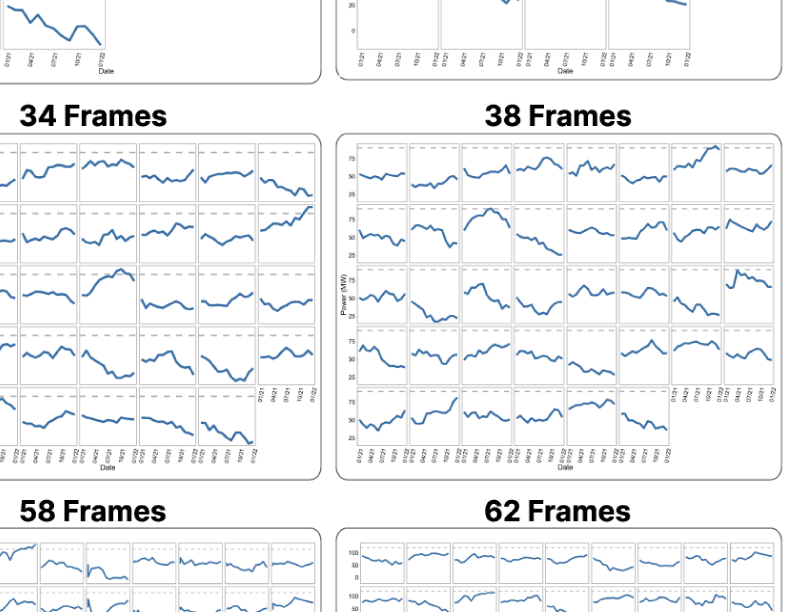Examining Limits of Small Multiples: Frame Quantity Impacts Judgments with Line Graphs
Helia Hosseinpour -
Laura E. Matzen -
Kristin M. Divis -
Spencer C. Castro -
Lace Padilla -
Download preprint PDF
DOI: 10.1109/TVCG.2024.3372620
Room: Bayshore II
2024-10-16T16:36:00ZGMT-0600Change your timezone on the schedule page
2024-10-16T16:36:00Z

Fast forward
Full Video
Keywords
Cognition, small multiples, time-series data
Abstract
Small multiples are a popular visualization method, displaying different views of a dataset using multiple frames, often with the same scale and axes. However, there is a need to address their potential constraints, especially in the context of human cognitive capacity limits. These limits dictate the maximum information our mind can process at once. We explore the issue of capacity limitation by testing competing theories that describe how the number of frames shown in a display, the scale of the frames, and time constraints impact user performance with small multiples of line charts in an energy grid scenario. In two online studies (Experiment 1 n = 141 and Experiment 2 n = 360) and a follow-up eye-tracking analysis (n=5),we found a linear decline in accuracy with increasing frames across seven tasks, which was not fully explained by differences in frame size, suggesting visual search challenges. Moreover, the studies demonstrate that highlighting specific frames can mitigate some visual search difficulties but, surprisingly, not eliminate them. This research offers insights into optimizing the utility of small multiples by aligning them with human limitations.